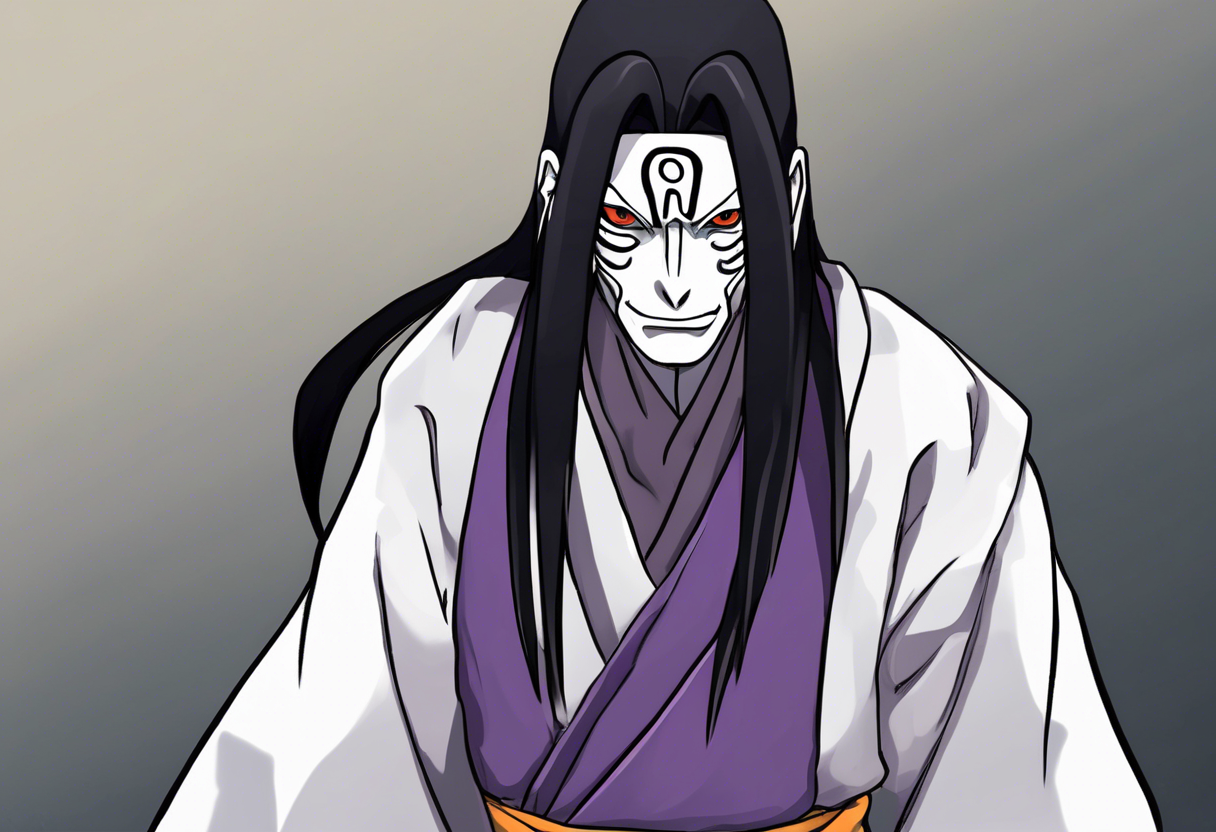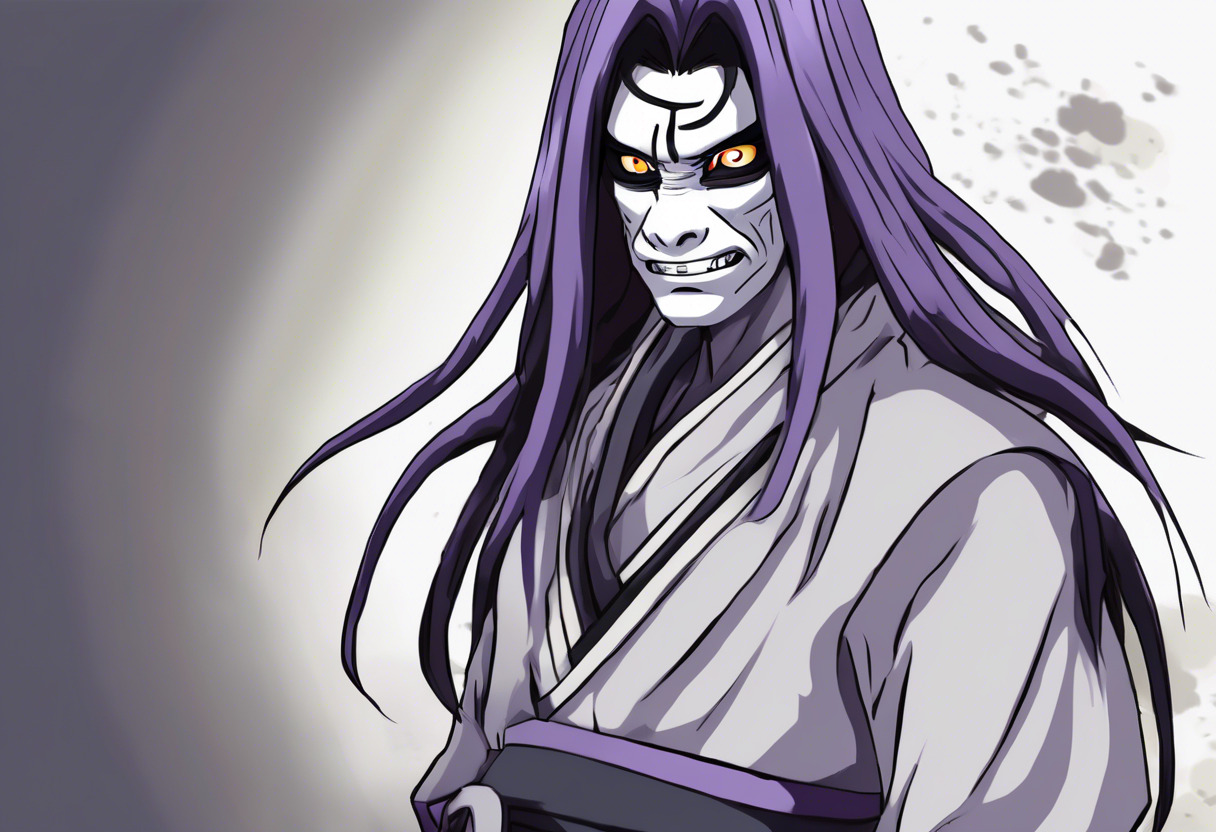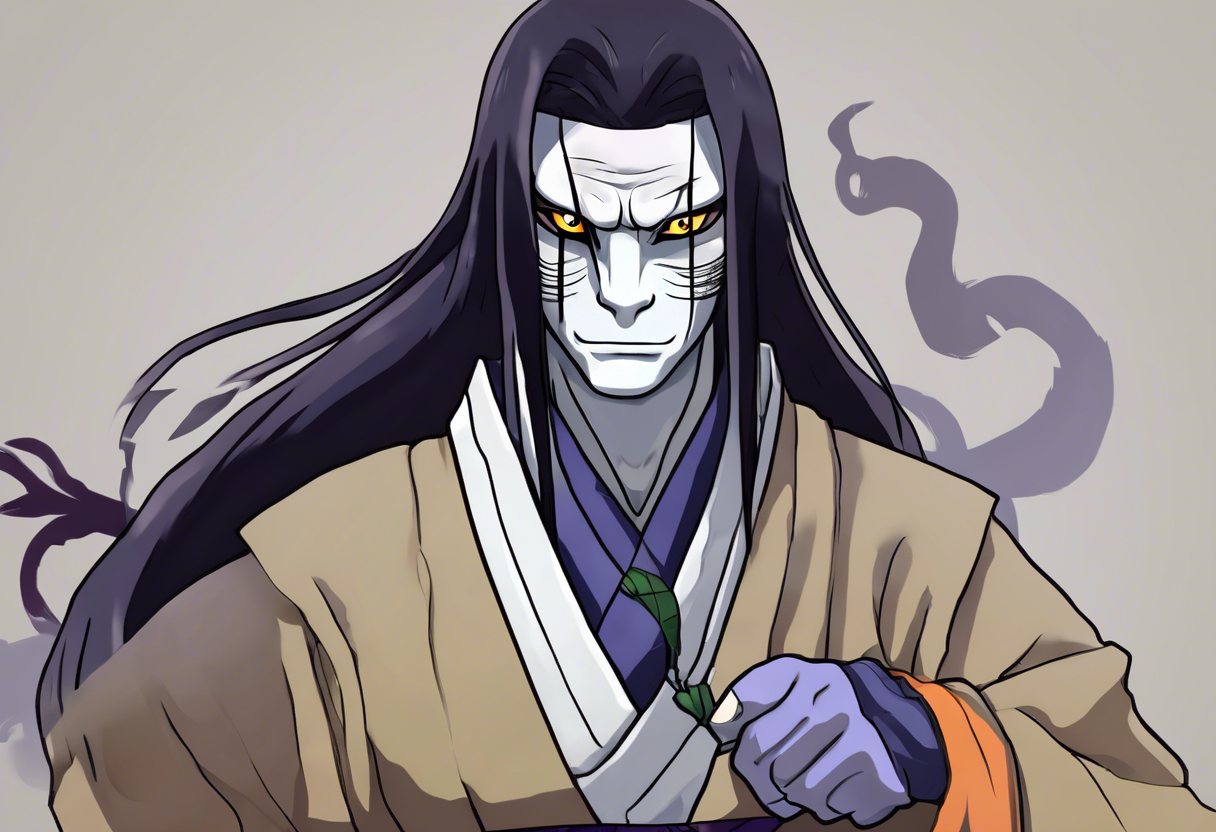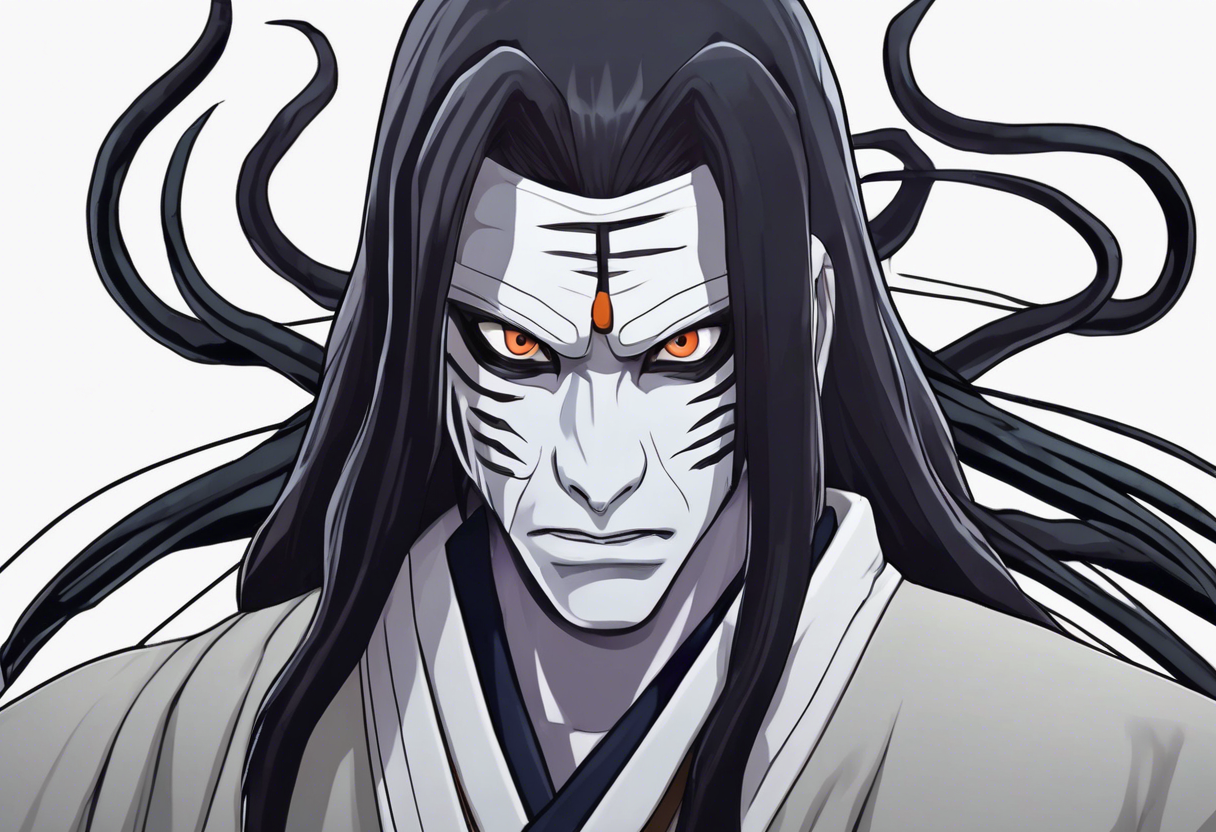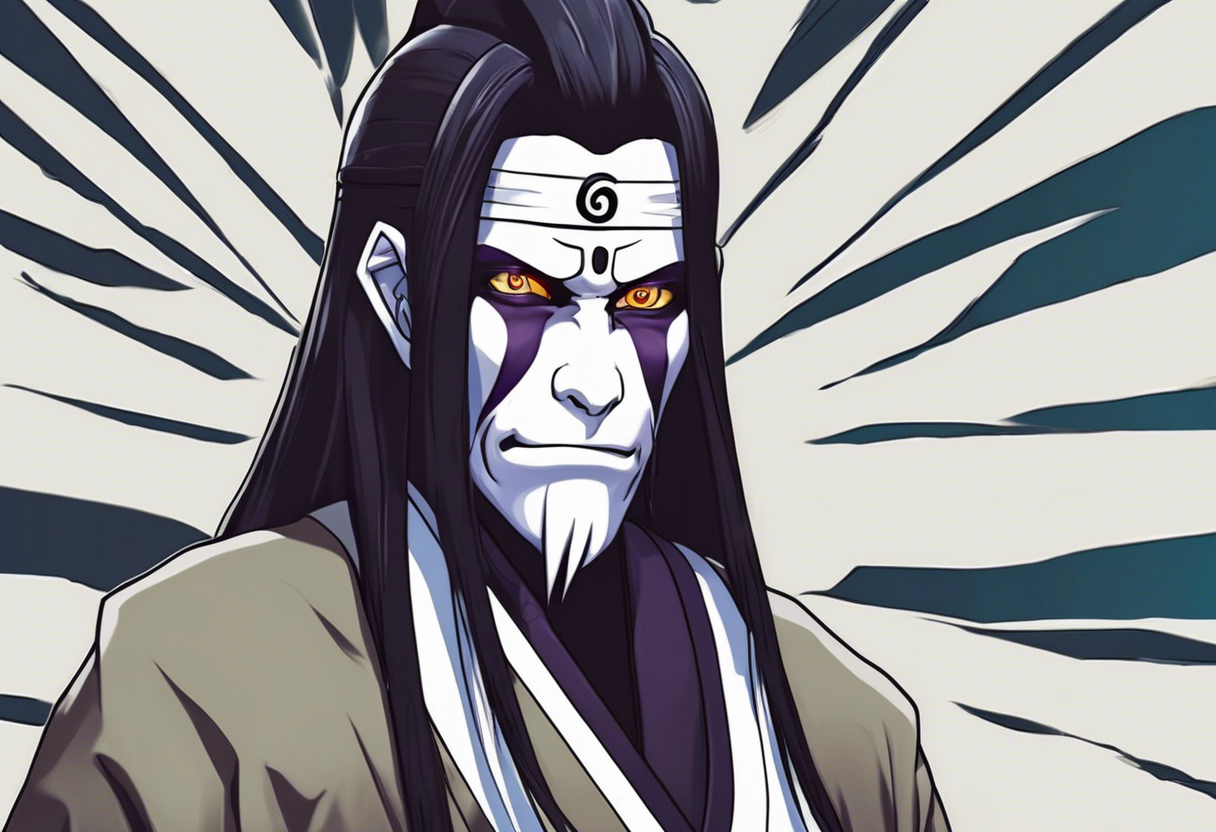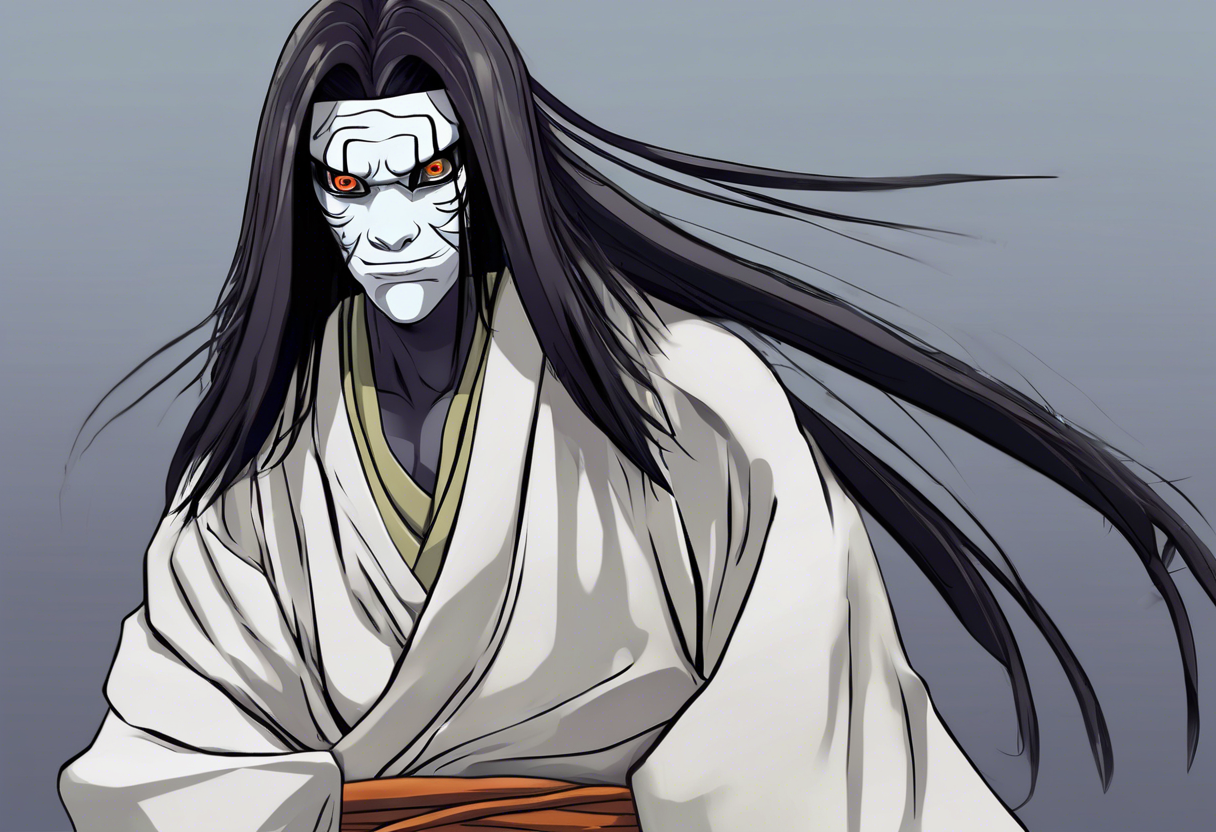Contents
Orochimaru: The Complex and Enigmatic Villain of Naruto
Introduction
Orochimaru, one of the most iconic and complex characters in the Naruto series, was created by Masashi Kishimoto. He is a member of the Legendary Sannin, a group of highly skilled ninjas from the Hidden Leaf Village, and is renowned for his intellect, cunning, and unrelenting pursuit of immortality and knowledge.
Orochimaru’s backstory is marked by his early prodigy status and his eventual descent into darkness. As a student of Hiruzen Sarutobi, the Third Hokage, Orochimaru quickly surpassed his peers, earning praise from even the legendary Hashirama Senju [5] . However, his obsession with immortality and his willingness to cross moral boundaries led to his expulsion from the Hidden Leaf Village and his transformation into one of the series’ most formidable villains.
Orochimaru’s defining traits include his exceptional intelligence, mastery of ninjutsu, and his ability to manipulate others through charisma and experimentation. His snake-like appearance and abilities further solidify his enigmatic and often terrifying presence in the series.
Role in the Story
Orochimaru’s storyline is deeply intertwined with the main narrative of Naruto. Initially, he is introduced as a major antagonist who seeks to kill the Third Hokage and later attempts to manipulate Sasuke Uchiha into joining him in his quest for power [2] . Orochimaru’s actions have a profound impact on the series, particularly on Sasuke, whom he tempts with the promise of avenging his brother, Itachi Uchiha.
Throughout the series, Orochimaru establishes his own village, Otogakure, as a front for his human experiments. He attracts powerful ninjas and uses them as test subjects to further his research into immortality and advanced ninjutsu techniques [4] . His experiments often result in the creation of powerful but twisted shinobi, such as the Sound Four and Kimimaro, who display unique abilities that Orochimaru seeks to exploit.
Orochimaru’s relationship with Kabuto Yakushi is particularly significant. Kabuto becomes Orochimaru’s most loyal follower after being manipulated and experimented on. This dynamic showcases Orochimaru’s ability to instill fanatical loyalty in his followers, even using them as double agents to gather information about his enemies [1] .
Character Analysis
Orochimaru’s personality is complex and multifaceted. He is driven by an insatiable curiosity and a desire for knowledge and immortality. This obsession often leads him to cross ethical boundaries, making him a morally ambiguous character. Despite his villainous nature, Orochimaru exhibits a level of charisma that attracts followers who are willing to sacrifice themselves for his cause.
One of Orochimaru’s greatest strengths is his intellect. He is capable of outsmarting his opponents at every turn, often using his knowledge to develop new and powerful jutsu. However, this intelligence is also a double-edged sword, as it fuels his arrogance and God complex, leading him to value himself highly above others [5] .
Orochimaru’s flaws include his lack of empathy and his willingness to use others as mere tools for his experiments. This is evident in his treatment of his followers, whom he often sends on suicidal missions or uses as test subjects for his twisted experiments.
Despite these flaws, Orochimaru undergoes significant development throughout the series. He begins to question his own morality and eventually takes steps to make amends for his past mistakes. His relationship with Mitsuki, a young ninja he mentors, highlights a softer side to his character, as he encourages Mitsuki to make his own decisions and find his own path [5] .
Themes and Symbolism
Orochimaru embodies several themes and symbolic elements that are central to the Naruto series. His pursuit of immortality and perfection is reminiscent of Lucifer’s desire to usurp God’s place, drawing parallels between Orochimaru and Satanic figures in mythology and literature [3] .
The imagery of snakes, which is closely associated with Orochimaru, symbolizes immorality and the quest for eternal life. The snake shedding its skin is a metaphor for reincarnation and immortality, reflecting Orochimaru’s ultimate goal. Additionally, the symbol of the Ouroboros, a snake consuming its own tail, suggests that power can ultimately lead to self-destruction, a theme that is reflected in Orochimaru’s own downfall and redemption arc [4] .
Orochimaru’s character also explores the theme of sacrifice and the cost of ambition. His willingness to sacrifice others and even himself in the pursuit of knowledge and power serves as a cautionary tale about the dangers of unchecked ambition.
Cultural Impact
Orochimaru has had a significant cultural impact since his introduction in the Naruto series. He is widely regarded as one of the most iconic and compelling villains in anime history. His complex character and intriguing backstory have captivated audiences, making him a favorite among fans.
In adaptations and spin-offs, Orochimaru’s character has been consistently portrayed as a mastermind with a deep sense of intrigue and danger. His influence can be seen in other anime and manga series, where characters with similar traits of intelligence, cunning, and moral ambiguity are often modeled after him.
Critical Reception
Critics and audiences have had varied but generally positive reactions to Orochimaru’s character. His initial characterization as a menacing and intelligent villain was well-received, and his subsequent development added depth to his persona. However, some critics argue that his characterization went downhill as the series progressed, becoming less menacing and more of a background figure [2] .
Despite this, Orochimaru remains one of the most beloved and respected characters in the Naruto universe. His complexity and the moral ambiguity he represents continue to fascinate audiences, making him a subject of extensive analysis and discussion.
Legacy
Orochimaru’s legacy in the Naruto series is profound and enduring. He represents a unique blend of intelligence, ambition, and moral complexity that has inspired many other characters in anime and manga. His influence can be seen in the way other series approach villainous characters, often incorporating elements of his charisma, intelligence, and moral ambiguity.
In contemporary discussions, Orochimaru is often cited as an example of a well-crafted villain who adds depth and complexity to a narrative. His character serves as a reminder that even the most villainous figures can have compelling backstories and motivations, making them relatable and intriguing.
References
- https://www.cbr.com/orochimaru-smartest-naruto-character/
- https://gamerant.com/naruto-how-orochimarus-characterization-went-downhill/
- https://www.fanverse.org/threads/could-orochimaru-represent-satan-in-the-naruto-universe.934658/
- https://www.thegamer.com/narut-orochimaru-background-details/
- https://wiki.sportskeeda.com/naruto/orochimaru

